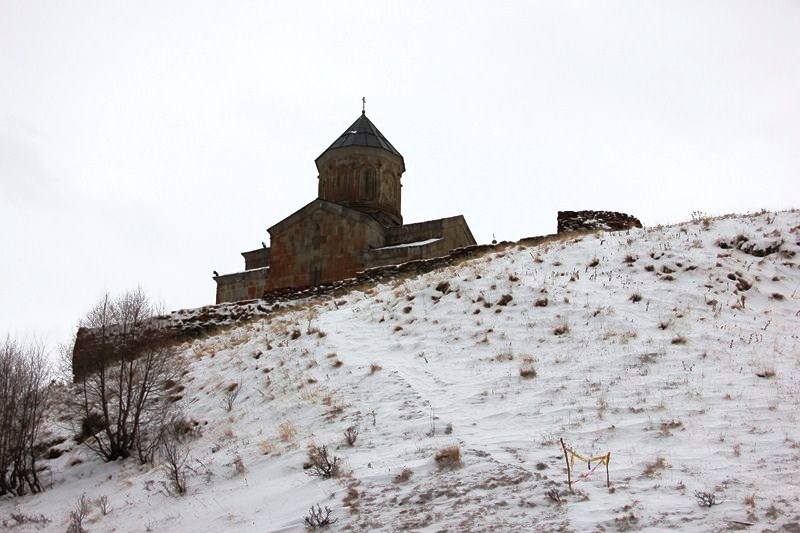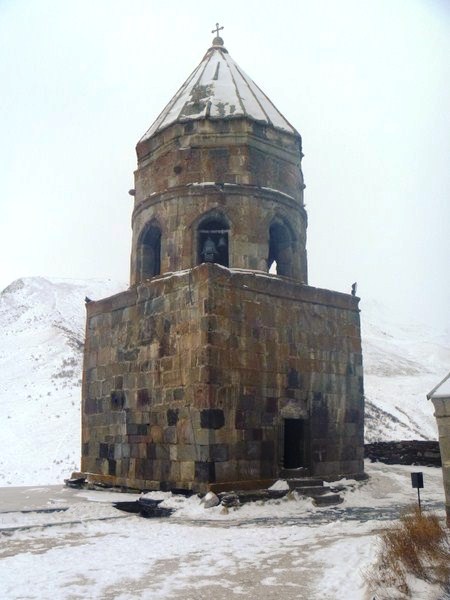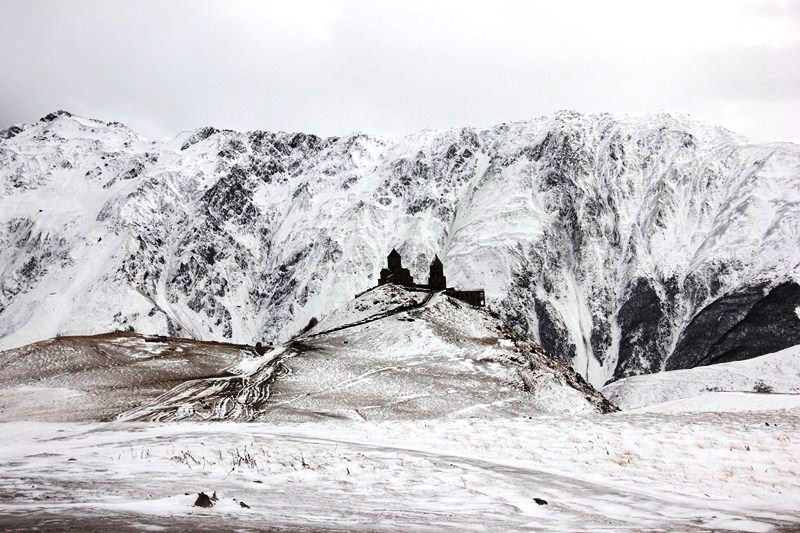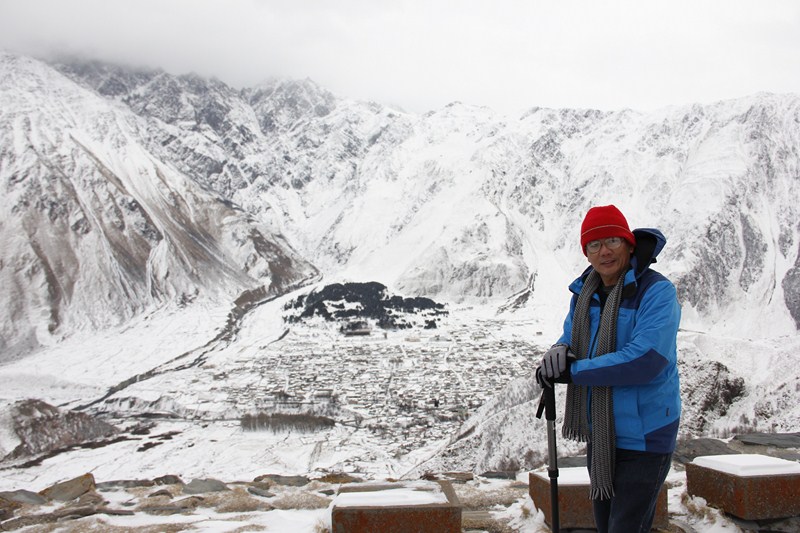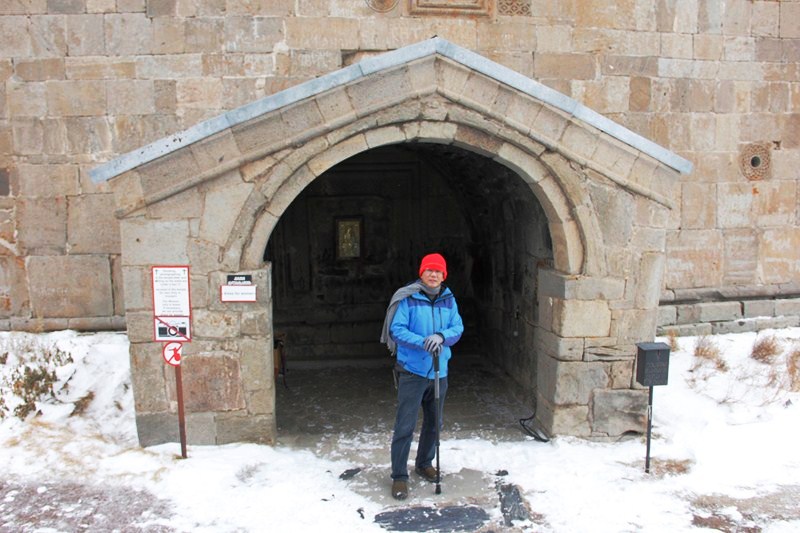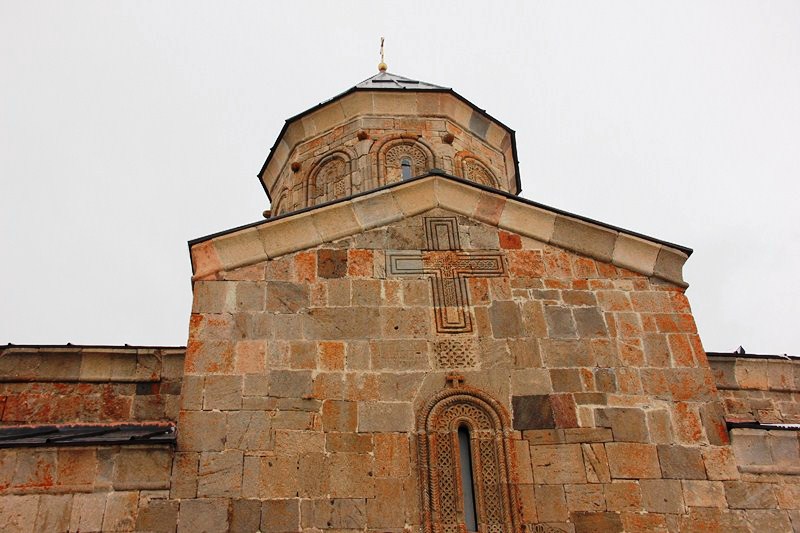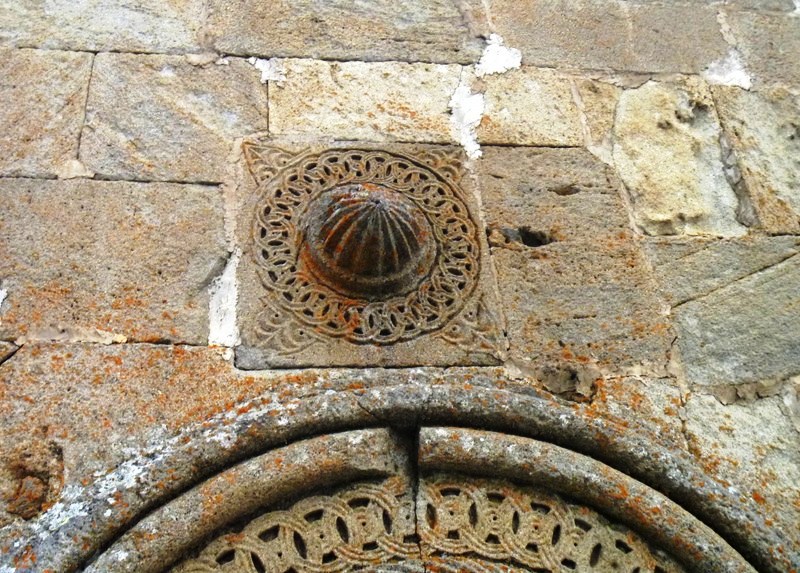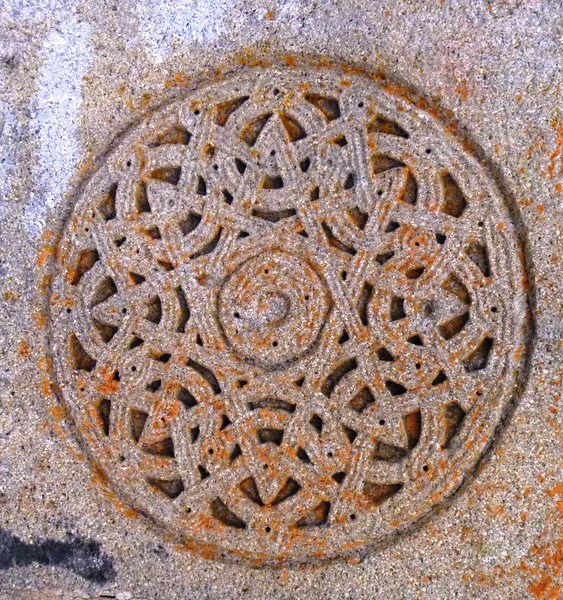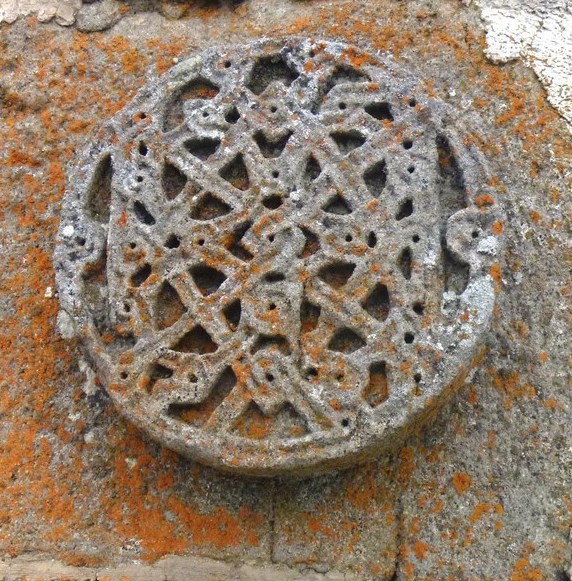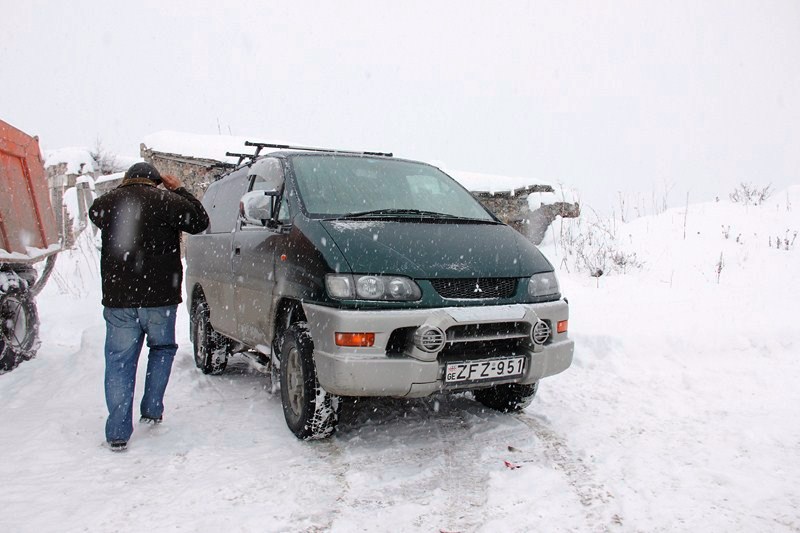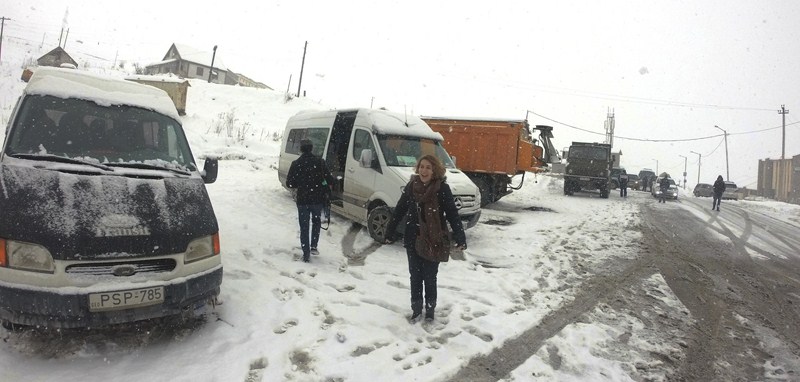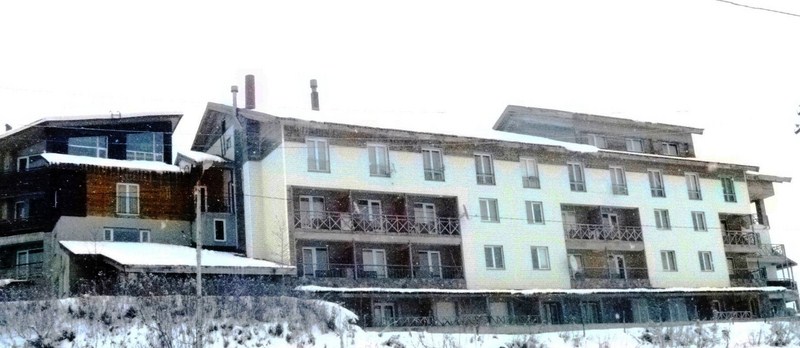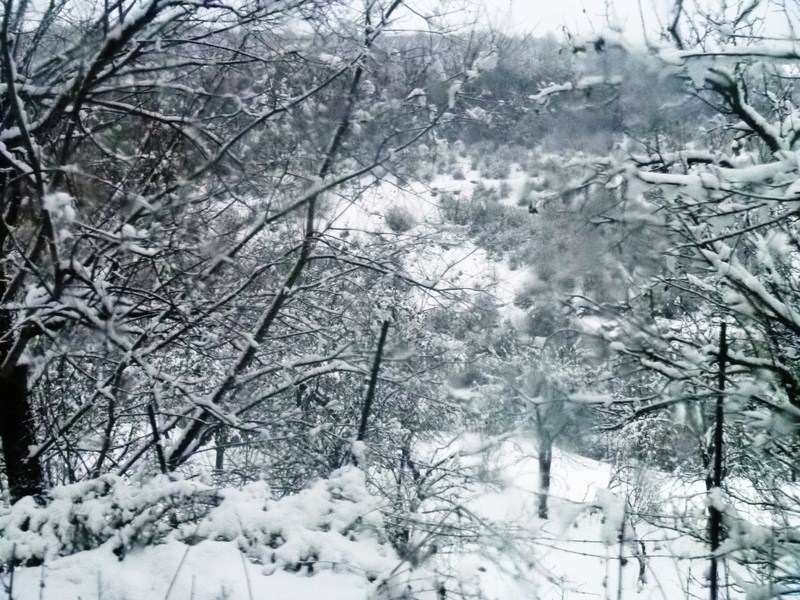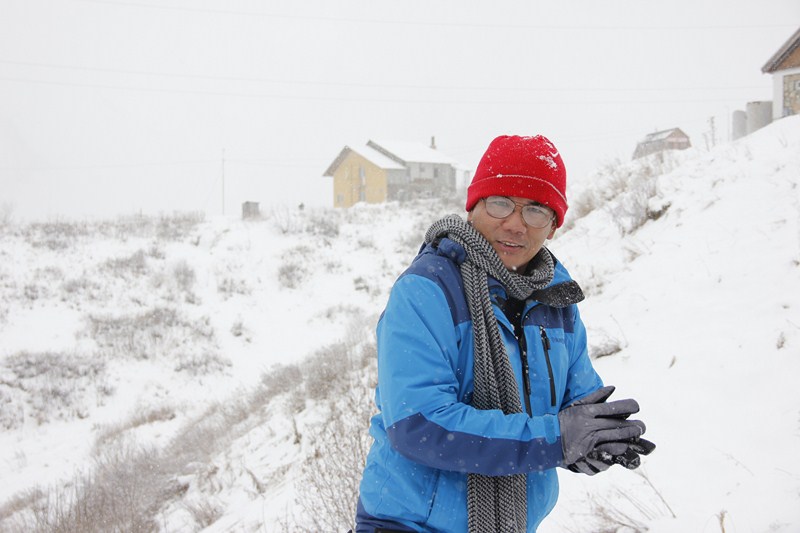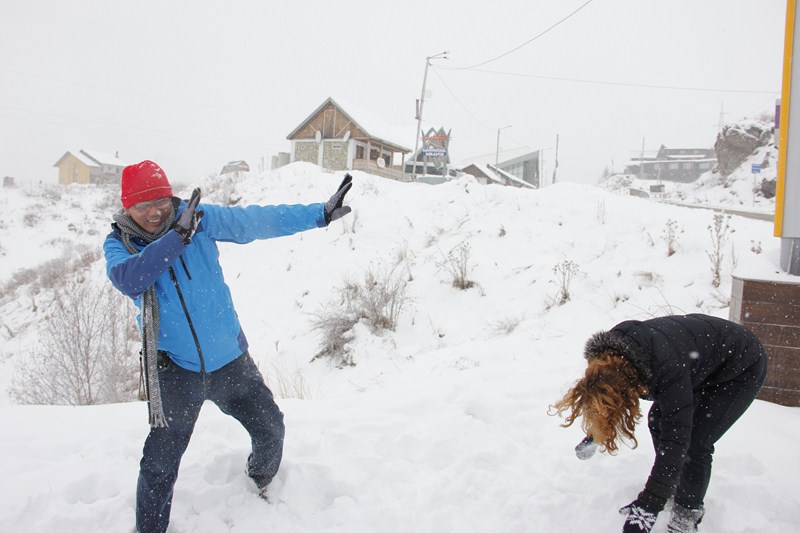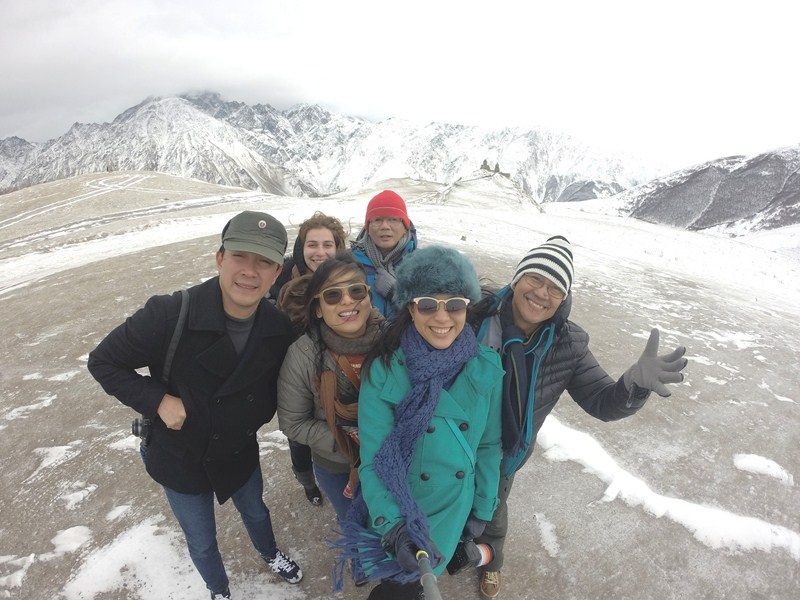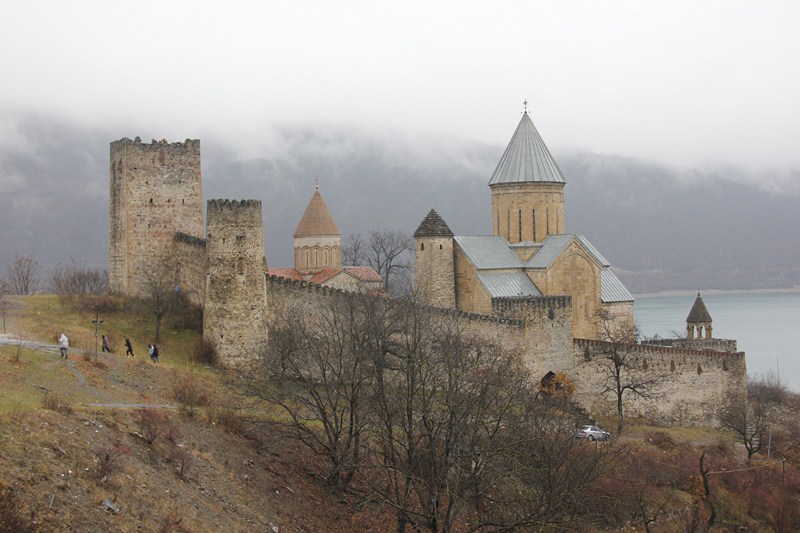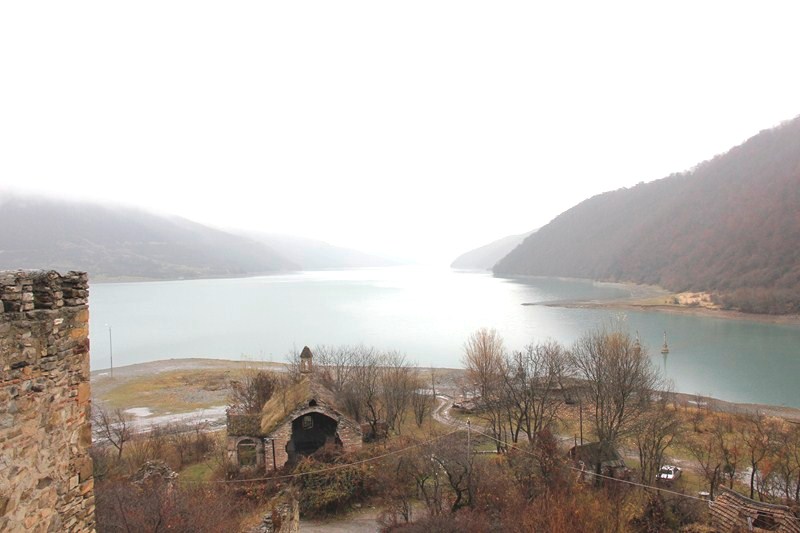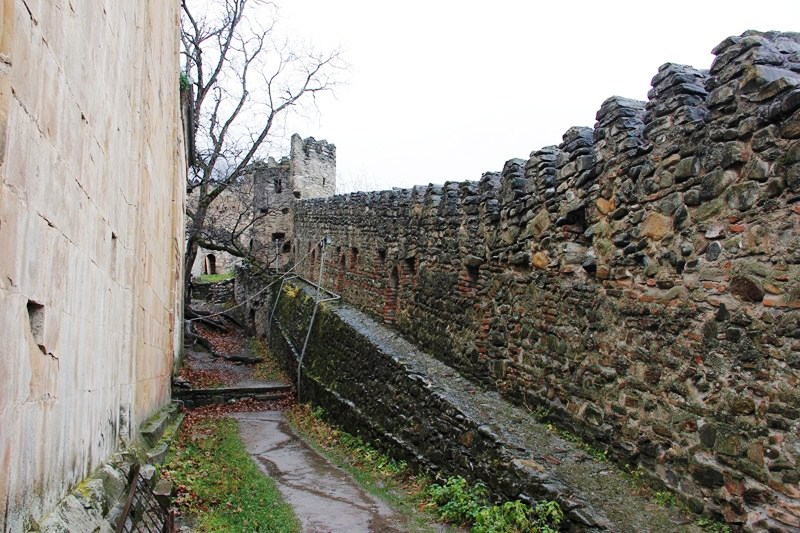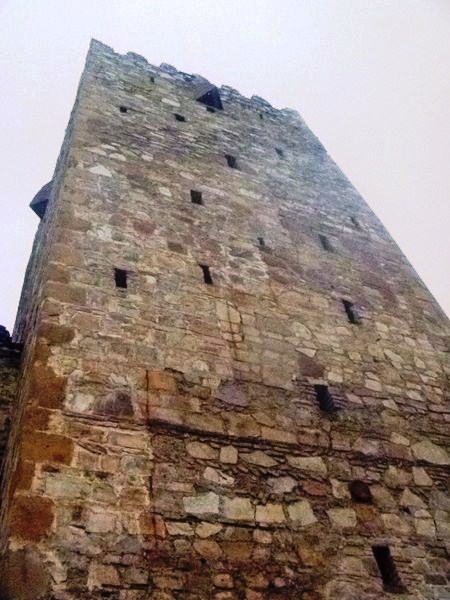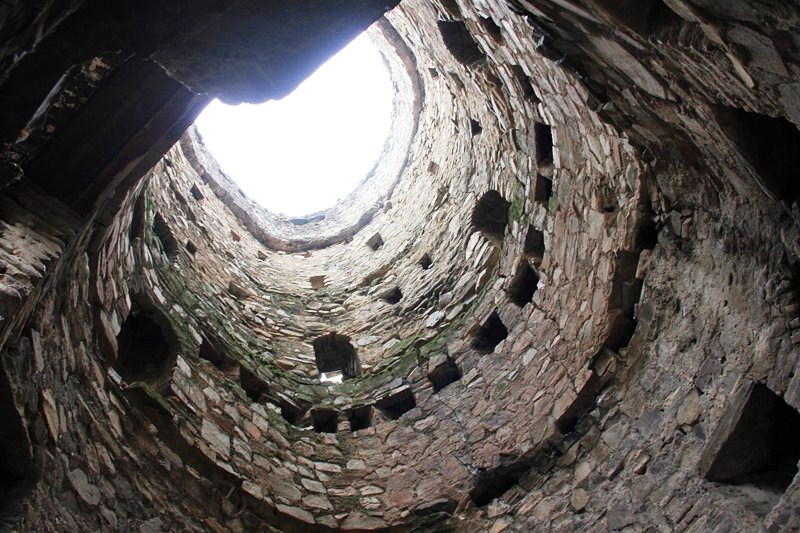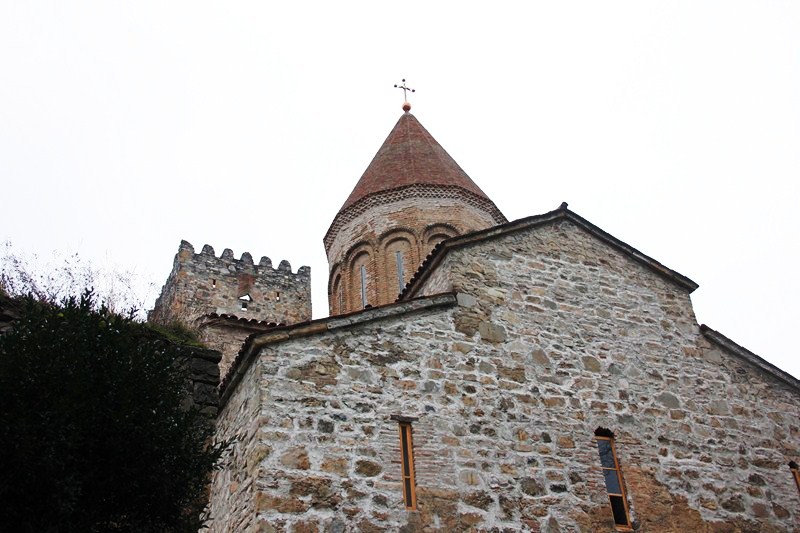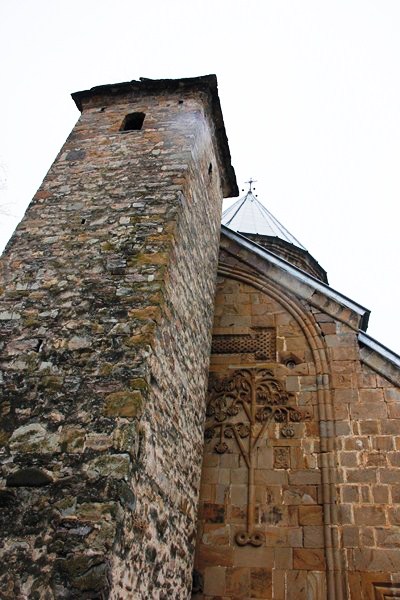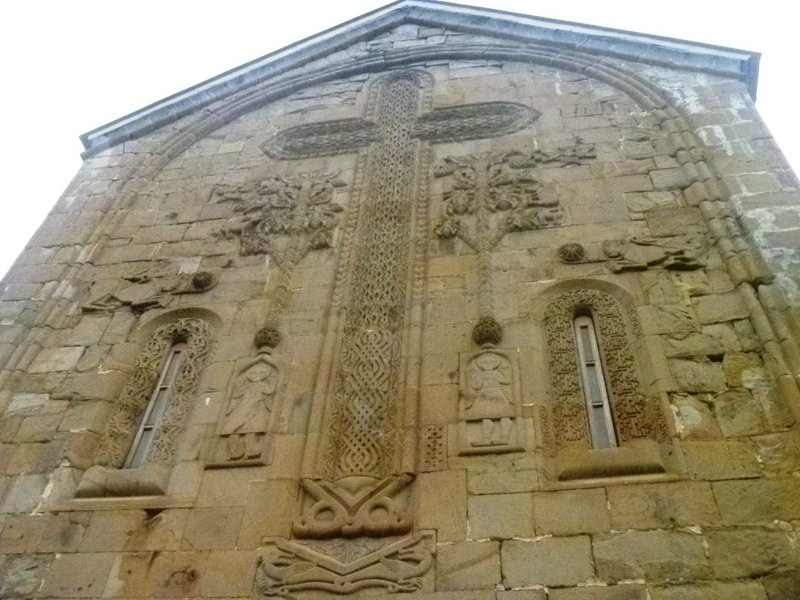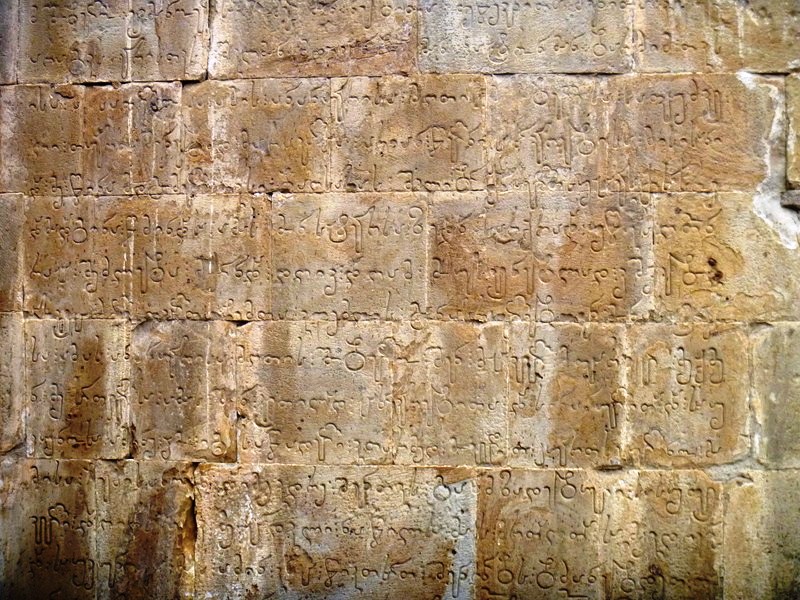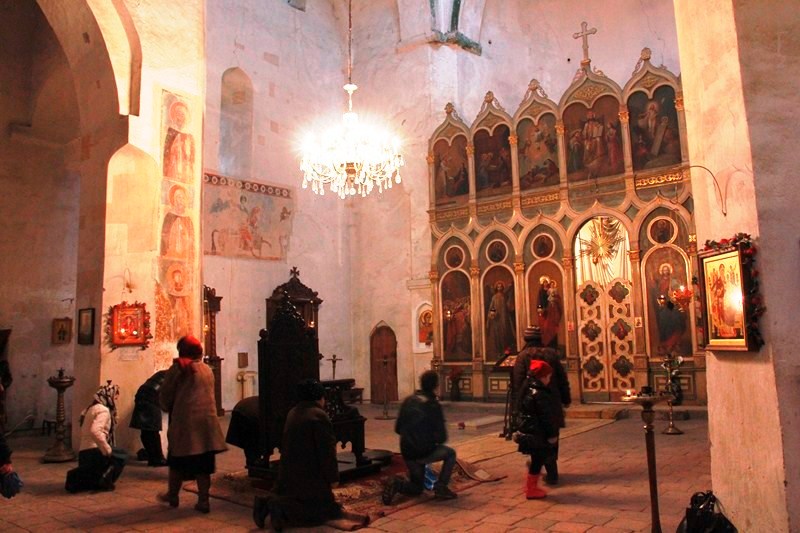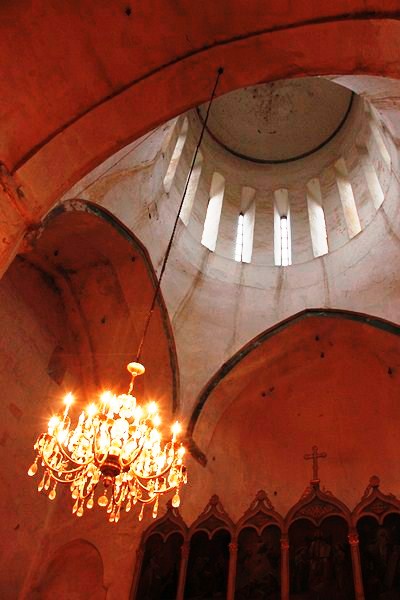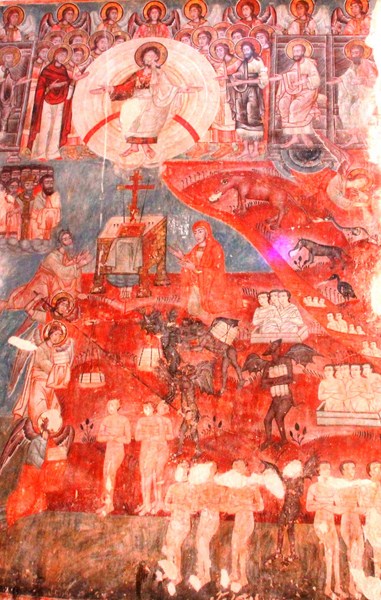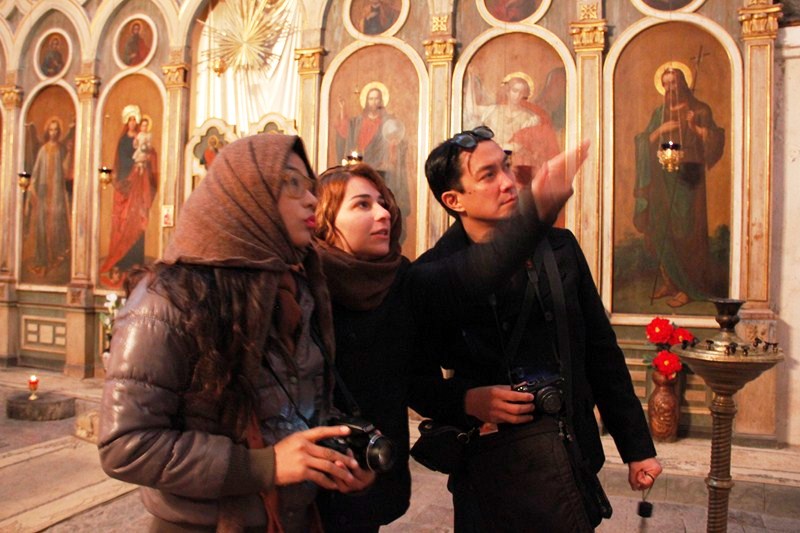After our lunch at the Rooms Hotel in Stepantsminda, Buddy, Pancho, Melissa, Riva, Sopho and I again boarded our Mitsubishi Delica L-400 van that would take us, a further 450 m. up, to Gergeti Trinity Church, a popular name for the Holy Trinity Church. This isolated church, situated on the right bank of the river Chkheri (the left tributary of the river Terek), at an elevation of 2,170 m, is located just outside the town, near the shepherd’s village of Gergeti.
The small but well-preserved church, known to be the only cross-cupola church in Khevi province, was built in the 14th century. Its separate bell tower dates back to the same period as the church itself. During the Soviet Period all religious services were prohibited, but the church still remained to be a popular tourist destination. The church is now an active establishment of the Georgian Orthodox and Apostolic Church.
The drive, up a rough, rocky and snow-laden mountain trail through the forest, took us around 30 minutes. There was fantastic scenery all throughout the ascent, with scenic alpine valleys, crystal-clear streams, and great vistas of mountains.
Upon our arrival just below the church, Sopho, Buddy, Riva and I hiked up the remaining distance to the church. Pancho and Melissa stayed behind in the van. Once there, we were held in awe by the breathtaking and panoramic view of the towering Caucasus Mountains, with the fabulous 5,034 m. (16,516 ft.) high, snow-capped Mt. Kazbegi (Georgia’s 3rd highest mountain, after Mt. Shkhara and Janga, and the seventh highest peak in the Caucasus Mountains) in the foreground of the church.
Inside this small but gorgeous and intimate church are amazing old doors, some impressive frescoes and beautiful paintings of icons (including a rare Black Madonna icon which was saved from a fire). Probably the most fundamentalist of Georgian Orthodox churches, ladies really need to wear a headscarf, long sleeves and a skirt to go inside (there is a changing room with these items provided). Men also have to wear trousers to get in.
There was no entrance fee but photography wasn’t allowed inside. In the ceiling, there is a trap door where, according to the 18th century Georgian author Vakhushti Batonishvili, the precious relics from Mtskheta, such as St. Nino’s cross, were brought here for safekeeping in times of danger or possible invasion.
The church, a popular waypoint for trekkers in the area, can also be reached via a steep 1.5 to 3 hour (depending on your fitness level) uphill climb. Gergeti Trinity Church’s isolated location on top of a steep mountain, surrounded by the vastness of nature, has truly made it a worthy symbol for Georgia. The sheer scale and immensity of this serene place was incredible and it’s too beautiful not to visit if you ever find yourself in Georgia.
Georgia National Tourism Administration: 4, Sanapiro St, 0105, Tbilisi, Georgia. Tel: +995 32 43 69 99. E-mail: info@gnta.ge. Website: www.georgia.travel; www.gnta.ge.
Qatar Airways has daily flights from Diosdado Macapagal International Airport (Clark, Pampanga) to Tbilisi (Republic of Georgia) with stopovers at Hamad International Airport (Doha, Qatar, 15 hrs.) and Heydar Aliyev International Airport (Baku, Azerbaijan, 1 hr.). Website: www.qatarairways.com.

